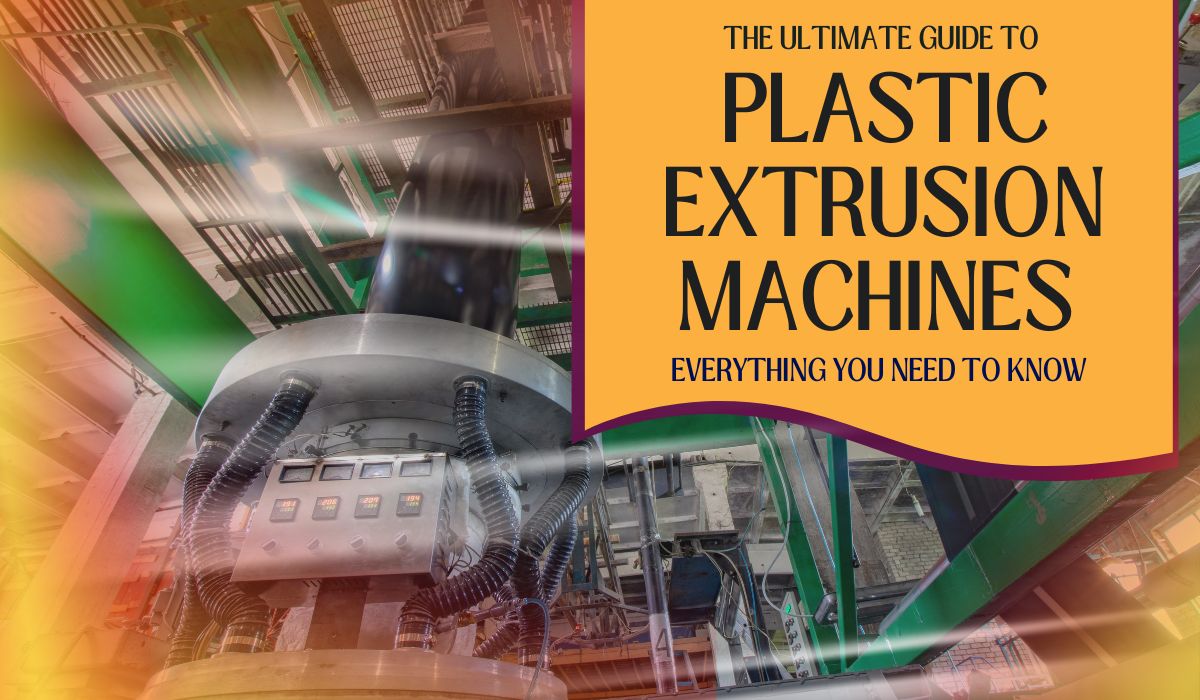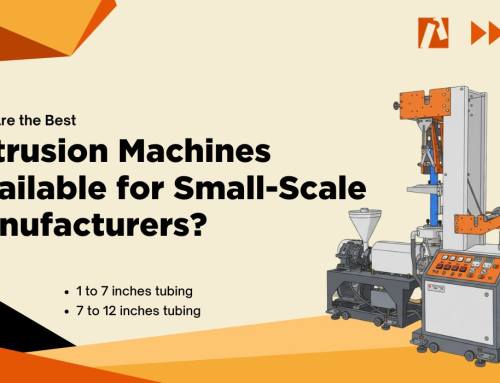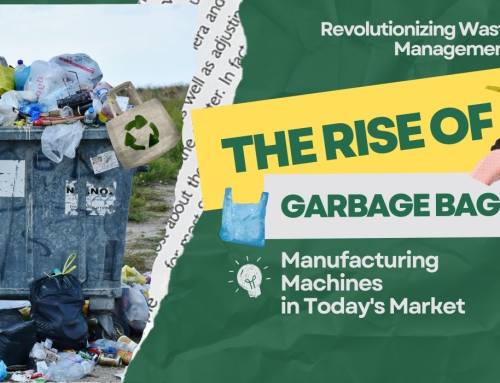Are you fascinated by the manufacturing process of plastic products? Then you’ll want to dive into the world of plastic extrusion machines. In this ultimate guide, we will explore everything you need to know about these powerful machines that shape plastic into various forms. From understanding the basics of extrusion to exploring the different types of extruders available, we’ll cover it all. Whether you’re a professional in the industry or simply curious about how things are made, this guide will provide you with a comprehensive overview.
How Plastic Extrusion Machines Work
Plastic extrusion is a fascinating manufacturing process that transforms raw plastic materials into usable products. The fundamental principle behind plastic extrusion is relatively straightforward: plastic pellets or granules are fed into a heated barrel, where they are melted and then forced through a die to create a continuous profile. The process begins with the loading of raw materials into a hopper. These materials are typically thermoplastics that can be easily melted and reshaped. As the material descends into the machine, it comes into contact with a rotating screw that moves it forward while simultaneously mixing and heating it.
The screw plays a pivotal role in the extrusion process. It not only moves the plastic forward but also helps to melt and homogenize the material to achieve a uniform consistency. As the plastic is heated, it transitions from a solid state to a viscous liquid, allowing it to be shaped effectively. The temperature within the barrel is carefully controlled to ensure that the plastic reaches the appropriate melting point without degrading. Once the material is sufficiently melted, it is forced through a die that shapes it into the desired profile, which can vary from simple sheets to complex tubing.
After exiting the die, the continuous strand of plastic is cooled and solidified, often through a water bath or air cooling system. The cooled product can then be cut into specific lengths or rolled up for further processing. This entire process is continuous, making it highly efficient for producing large quantities of plastic products. The precision and control over various parameters, such as temperature and pressure, are essential in ensuring the quality and consistency of the final product. Understanding this fundamental process is crucial for anyone interested in the inner workings of plastic manufacturing.
Different Types of Plastic Extrusion Machines
Plastic extrusion machines come in various types, each designed for specific applications and materials. The most common types include single-screw extruders, twin-screw extruders, and specialized extruders. Single-screw extruders are the most widely used due to their simplicity and effectiveness in processing a broad range of thermoplastics. They consist of a single rotating screw and are ideal for applications where a consistent, homogeneous melt is required. These machines are particularly suitable for producing films, sheets, and profiles.
On the other hand, twin-screw extruders feature two intermeshing screws that provide enhanced mixing and compounding capabilities. This type of extruder is particularly advantageous for processing materials that require a higher degree of mixing, such as filled or reinforced plastics. The twin-screw design allows for better control over the melting process and is commonly used in applications like the production of masterbatches and specialty compounds. Due to their versatility, twin-screw extruders can accommodate a variety of formulations and additives, making them a popular choice in advanced material development.
Additionally, specialized extruders are designed for unique applications, such as blow molding or extrusion coating. These machines may incorporate additional features like multiple die configurations or built-in cooling systems to meet specific production requirements. Understanding these different types of extrusion machines is vital for manufacturers to choose the right equipment for their specific needs, ensuring efficient production and high-quality end products.
Key Components of a Plastic Extrusion Machine
To fully grasp how plastic extrusion machines operate, it’s essential to understand their key components. The primary parts include the hopper, barrel, screw, die, and cooling system. The hopper is the entry point for raw materials, ensuring a controlled feed into the machine. It is designed to accommodate various material forms, such as pellets, granules, or powders, and often includes a lid to prevent contamination.
The barrel houses the screw and plays a critical role in heating the plastic. It is equipped with temperature controls and heating elements to ensure that the material reaches the desired melting point. The screw itself is one of the most crucial components, as its design and configuration directly impact the efficiency of the melting and mixing process. Screws can vary in length, diameter, and pitch, allowing manufacturers to customize them based on the specific characteristics of the material being processed.
The die is another vital part of the extrusion machine, responsible for shaping the molten plastic as it exits the barrel. Dies can be designed to produce a wide range of profiles, from simple shapes like sheets and rods to complex geometries required for specialized applications. Finally, the cooling system is essential for solidifying the extruded product into its final form. It can consist of water baths, air cooling, or other methods, depending on the type of material and product being produced. Understanding these components helps operators maintain and optimize the performance of extrusion machines.
Choosing the Right Plastic Extrusion Machine for Your Needs
Selecting the appropriate plastic extrusion machine involves careful consideration of several factors, including the type of material you plan to process, the desired product specifications, and production volume. First and foremost, it’s essential to evaluate the characteristics of the plastic materials you intend to use. Different materials, such as polyethylene, polypropylene, or polystyrene, have unique processing requirements, including specific melting points and flow behavior. Understanding these qualities will guide you toward the most suitable type of extruder, whether it’s a single-screw or twin-screw model.
Another significant aspect to consider is the intended application of the extruded product. If your production demands high mixing capabilities or the inclusion of additives and fillers, a twin-screw extruder may be the best choice. Conversely, if you’re producing simple profiles or films, a single-screw extruder may suffice. Additionally, consider the desired output rate and the machine’s capacity to meet your production goals. High-volume production may necessitate investing in more advanced machinery with greater throughput capabilities.
Lastly, it’s crucial to assess the total cost of ownership, which includes not only the initial purchase price but also ongoing operational costs such as maintenance, energy consumption, and potential downtime. Investing in a reliable machine that can maintain efficiency over time will ultimately save money in the long run. By carefully evaluating these factors, you can make an informed decision that aligns with your production needs and business objectives.
Common Applications of Plastic Extrusion Machines
Plastic extrusion machines are utilized across various industries, producing an extensive array of products. Some of the most common applications include the manufacturing of films and sheets, pipes and tubing, and profiles for construction and packaging. The production of plastic films is particularly significant, as these materials are widely used in packaging applications due to their lightweight and flexible properties. Extruded films can vary in thickness and are often used for food packaging, agricultural covers, and industrial applications.
Another prevalent application of plastic extrusion is the creation of pipes and tubing. These products are fundamental in various sectors, including plumbing, irrigation, and automotive industries. Plastic pipes offer numerous advantages over traditional materials, including resistance to corrosion, lightweight, and ease of installation. Depending on the specific requirements, such as pressure ratings and chemical resistance, different types of plastics can be extruded to create durable and reliable piping solutions.
Profiles are yet another critical application of plastic extrusion. These include window frames, door frames, and other construction materials that require specific shapes and dimensions. The versatility of extrusion allows for the production of complex shapes that can be tailored to meet architectural and design specifications. Additionally, extruded profiles can be enhanced with various surface finishes or coatings to improve aesthetics and functionality. The wide range of applications for plastic extrusion machines highlights their importance in modern manufacturing and the diverse markets they serve.
Maintenance and Troubleshooting Tips for Plastic Extrusion Machines
Proper maintenance is vital for ensuring the longevity and efficiency of plastic extrusion machines. Regular maintenance activities should include cleaning the hopper and barrel, inspecting the screw for wear, and checking the die for any blockages or damage. Keeping the machine clean prevents contamination of materials and helps maintain consistent production quality. Operators should also routinely check the temperature controls and heating elements to ensure they are functioning correctly, as overheating or inadequate heating can lead to material degradation.
In addition to regular cleaning and inspections, it’s essential to monitor the machine’s performance and identify any potential issues early on. Common signs of problems may include unusual noises, fluctuations in temperature, or irregular product output. When encountering these issues, operators should refer to the machine’s manual for troubleshooting guidelines. For instance, if the extrusion process is experiencing pulsation or inconsistent flow, it may be necessary to adjust the feed rate or inspect the screw and die for any obstructions.
Investing in preventive maintenance programs can significantly reduce the likelihood of unexpected breakdowns and downtime. Scheduling regular maintenance checks and keeping detailed records of inspections and repairs can help operators anticipate issues before they arise. Additionally, training staff on proper machine operation and maintenance practices ensures that everyone involved understands the importance of keeping the extrusion equipment in optimal condition.
Safety Precautions When Operating a Plastic Extrusion Machine
Operating plastic extrusion machines involves inherent risks, necessitating strict adherence to safety protocols. First and foremost, operators must be equipped with appropriate personal protective equipment (PPE), including gloves, safety goggles, and heat-resistant clothing. The machinery operates at high temperatures, and exposure to molten plastic can result in severe burns. Ensuring that all safety gear is worn at all times helps minimize the risk of injury.
Furthermore, it is essential to maintain a clean and organized work environment around the extrusion machine. Cluttered areas can lead to accidents, including slips and falls. Operators should also ensure that all emergency exits and equipment are easily accessible. Proper training in emergency procedures, such as how to respond to equipment malfunctions or fires, is crucial for maintaining a safe workplace.
Regular safety audits and assessments should be conducted to identify potential hazards and ensure compliance with safety regulations. These assessments can help highlight areas where additional training or safety measures may be required. By fostering a culture of safety and vigilance, manufacturers can create a safer working environment while optimizing the performance of their plastic extrusion operations.
Future Trends and Advancements in Plastic Extrusion Technology
As the manufacturing landscape continues to evolve, so too does the technology behind plastic extrusion machines. One of the most significant trends is the integration of automation and smart manufacturing technologies. The incorporation of sensors, data analytics, and artificial intelligence enables real-time monitoring of the extrusion process, allowing for immediate adjustments to optimize production. This integration can lead to improved efficiency, reduced waste, and enhanced product quality.
Additionally, advancements in material science are paving the way for the development of new and innovative plastics that can be processed using extrusion techniques. Biodegradable and compostable plastics are gaining traction as industries seek more sustainable alternatives to traditional materials. As a result, extrusion machinery is being designed to accommodate these new materials, requiring adjustments to processing parameters and equipment configurations.
Another trend is the increasing focus on energy efficiency and sustainability in extrusion processes. Manufacturers are exploring ways to reduce energy consumption and minimize environmental impact, such as optimizing heating methods and implementing closed-loop cooling systems. These advancements not only help businesses operate more sustainably but also lead to cost savings in the long run. The future of plastic extrusion technology is bright, with ongoing innovations that promise to enhance productivity and sustainability in the industry.
Conclusion: The Importance of Plastic Extrusion Machines in Various Industries
In conclusion, plastic extrusion machines play a pivotal role in the manufacturing of a wide variety of products that are integral to numerous industries. From packaging materials and construction components to automotive parts and medical devices, the versatility and efficiency of extrusion technology have made it a cornerstone of modern manufacturing. Understanding the intricacies of how these machines work, the various types available, and the maintenance required ensures that manufacturers can optimize their production processes and maintain high-quality standards.
As industries continue to evolve, the role of plastic extrusion will only become more significant. The trends towards automation, sustainability, and the development of new materials will shape the future of this technology, offering exciting opportunities for innovation and growth. For professionals in the field and those curious about manufacturing, a comprehensive understanding of plastic extrusion machines is essential to navigate the complexities of this dynamic industry. Ultimately, the importance of plastic extrusion machines cannot be overstated, as they contribute to the creation of products that enhance our daily lives and support global economic development.








Hi
We are disposing plastic scrap at cost
But I want to use can you give some info about your machine and products we can made out of it
Hello Prabhakar, you can reach us out on +91 9227105525, +91 9033055168 and we can help you with more info based on your need